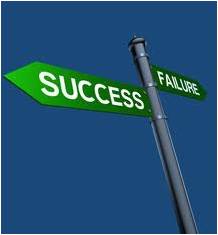Thanks to the sickly global economy and the resulting corporate deleveraging and pressures to reduce costs, many companies have increasingly turned to locating new sourcing opportunities overseas. The decision to either outsource production or seek new suppliers is a strategic one. But very often it is not given the strategic importance that it requires. Before anyone begins to outsource, they should have a clear outsourcing strategy.
[custom_frame_right shadow=”on”] [/custom_frame_right] We have decided to dedicate the next few weeks of posts to some of the key considerations that anyone looking to launch a new sourcing initiative should consider. As a starting point, we begin with Needs Analysis.
[/custom_frame_right] We have decided to dedicate the next few weeks of posts to some of the key considerations that anyone looking to launch a new sourcing initiative should consider. As a starting point, we begin with Needs Analysis.
Before attempting to source anything, it is essential that you have spent some time thinking through your needs. It can mean the difference between success and failure.
Needs form the raw materials from which we build sourcing goals, which in turn make up the yardstick by which we measure the attractiveness of the offers we receive. It is the ability of the supplier to deliver against his proposal and your needs that will determine success or failure. [custom_frame_left shadow=”on”] [/custom_frame_left] Therefore, it is critically important. Without a clear understanding of needs, the probability is heavily skewed toward a process that runs its course along the path of least resistance. As Elbert Hubbard said, it is the path of least resistance that makes rivers run crooked. Worse yet, a miscalculation of needs runs the river in the wrong direction! So take the time up front to understand as much as possible about your needs to put yourself in the best position to reach a successful conclusion to your sourcing initiative(s).
[/custom_frame_left] Therefore, it is critically important. Without a clear understanding of needs, the probability is heavily skewed toward a process that runs its course along the path of least resistance. As Elbert Hubbard said, it is the path of least resistance that makes rivers run crooked. Worse yet, a miscalculation of needs runs the river in the wrong direction! So take the time up front to understand as much as possible about your needs to put yourself in the best position to reach a successful conclusion to your sourcing initiative(s).
The purpose of a needs assessment is to answer the questions: who, what, why, when and how.
- Who is your customer? Perform an environmental scan. Think about the context into which you will be selling your product. Conduct a target population analysis to learn as much as possible about those people who will be using your product. What do they have in common? What is the problem the customer looks to solve with your product? Who is your competition and what do they offer your customer that’s unique or different.
- What is it that I want to source? Based on real customer needs and your unique selling proposition, what is it specifically that I need? Conduct a “needs versus wants” analysis to understand the critical elements that are essential to being able to deliver your unique selling proposition. Identify the specific differentiators between your product and those offered by your competition.[custom_frame_right shadow=”on”]
 [/custom_frame_right]
[/custom_frame_right] - Why am I looking to source this product from overseas? Try to tie the response to a specific business need and be sure that the perceived benefits you seek in sourcing the product offshore will be greater than the implied costs of alternatives (whether that alternative is the same product sourced locally or whether the alternative is to not source it at all). Be sure to contemplate both real and potentially hidden costs in your analysis.
- When do I need the product? Identify the specific inventory requirements that will be needed to meet sales projections and determine when you will need goods to be delivered to your facilities or designated destination.
- How should my sourcing request be managed? Set a timeline and critical milestones and try and stick to your schedule. Conduct a task analysis to understand the best way to manage your request for proposals, review of quotes, receipt of samples, selection criteria, etc.
Not all five questions must be answered as part of a needs assessment process. But this list gives you a good example of where to begin. If you are able to define clearly the answers to these five questions, then you should be in a good position to communicate your needs to your potential suppliers and improve your chances for success.
